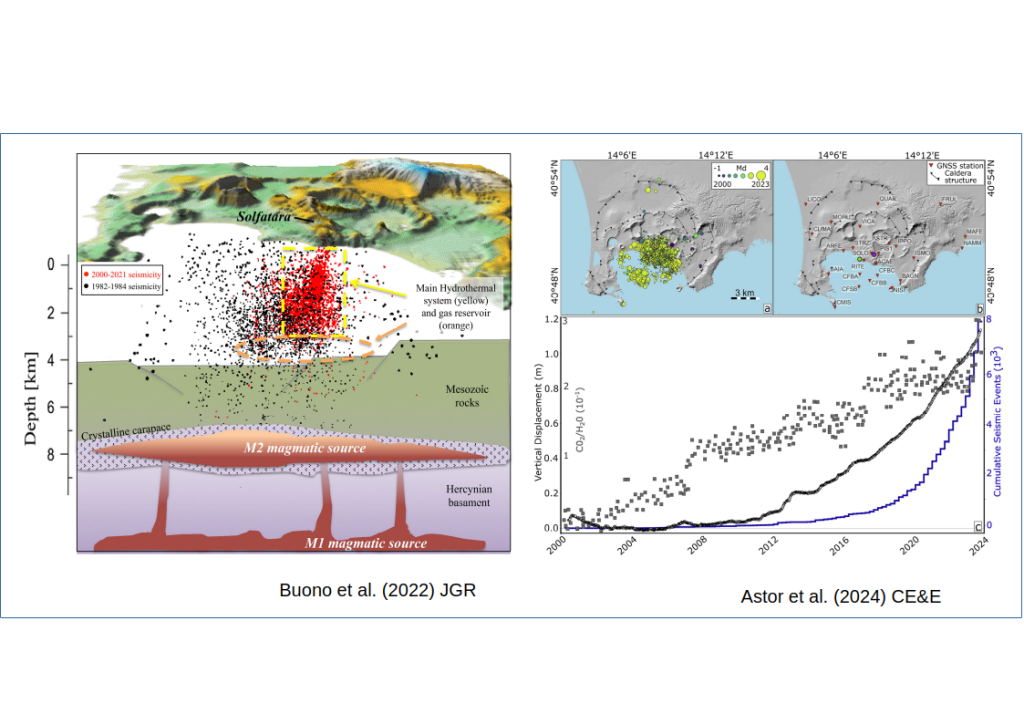
Campi Flegrei: A Volcanological Overview
1. Geological Setting
Campi Flegrei (Phlegraean Fields) is a large, active volcanic caldera located west of Naples, Italy. It is part of the Campanian Volcanic Province, which includes Vesuvius and Ischia. The caldera spans ~12–15 km in diameter and is characterized by complex volcanic and hydrothermal activity.
The caldera formed following two major Plinian and Ignimbritic eruptions:
- Campanian Ignimbrite Eruption (~39,000 years ago) – One of the largest explosive eruptions in Europe, ejecting >300 km³ of magma and causing widespread devastation.
- Neapolitan Yellow Tuff Eruption (~15,000 years ago) – A smaller but still significant eruption that further reshaped the caldera.
2. Volcanic Features and Eruption History
The caldera contains more than 24 eruptive centers, including tuff rings, tuff cones, lava domes, and maars. The most recent eruption was:
- Monte Nuovo (1538 AD): A small, short-lived phreatomagmatic eruption that formed a new cone.
Other significant features include:
- Solfatara Crater: A major fumarolic field with intense degassing.
- Astroni and Agnano: Relict tuff cones and maars.
- Pozzuoli Bay: A submerged caldera segment affected by uplift.
3. Current Activity and Monitoring
Campi Flegrei is in a state of volcanic unrest, with continuous monitoring by the Istituto Nazionale di Geofisica e Vulcanologia (INGV). The main signs of activity include:
- Bradyseism (slow ground uplift and subsidence): Particularly near Pozzuoli, where the ground has risen several meters since the 1950s.
- Seismic swarms: Frequent small, shallow earthquakes.
- Hydrothermal and gas emissions: Increased CO₂ and SO₂ degassing from fumaroles and thermal springs.
4. Volcanic Hazards and Risks
Given its explosive potential and proximity to Naples (~1.5 million people), Campi Flegrei is one of the most dangerous volcanic systems in the world. Major hazards include:
- Explosive eruptions (phreatomagmatic or magmatic).
- Pyroclastic density currents and ash fallout.
- Seismicity and ground deformation impacting infrastructure.
- Hydrothermal explosions from increased pressurization.
5. Future Outlook
While an eruption is not imminent, continued uplift and seismicity suggest magma or hydrothermal fluids are moving underground. The Italian Civil Protection and INGV maintain a color-coded alert system to assess risk levels.